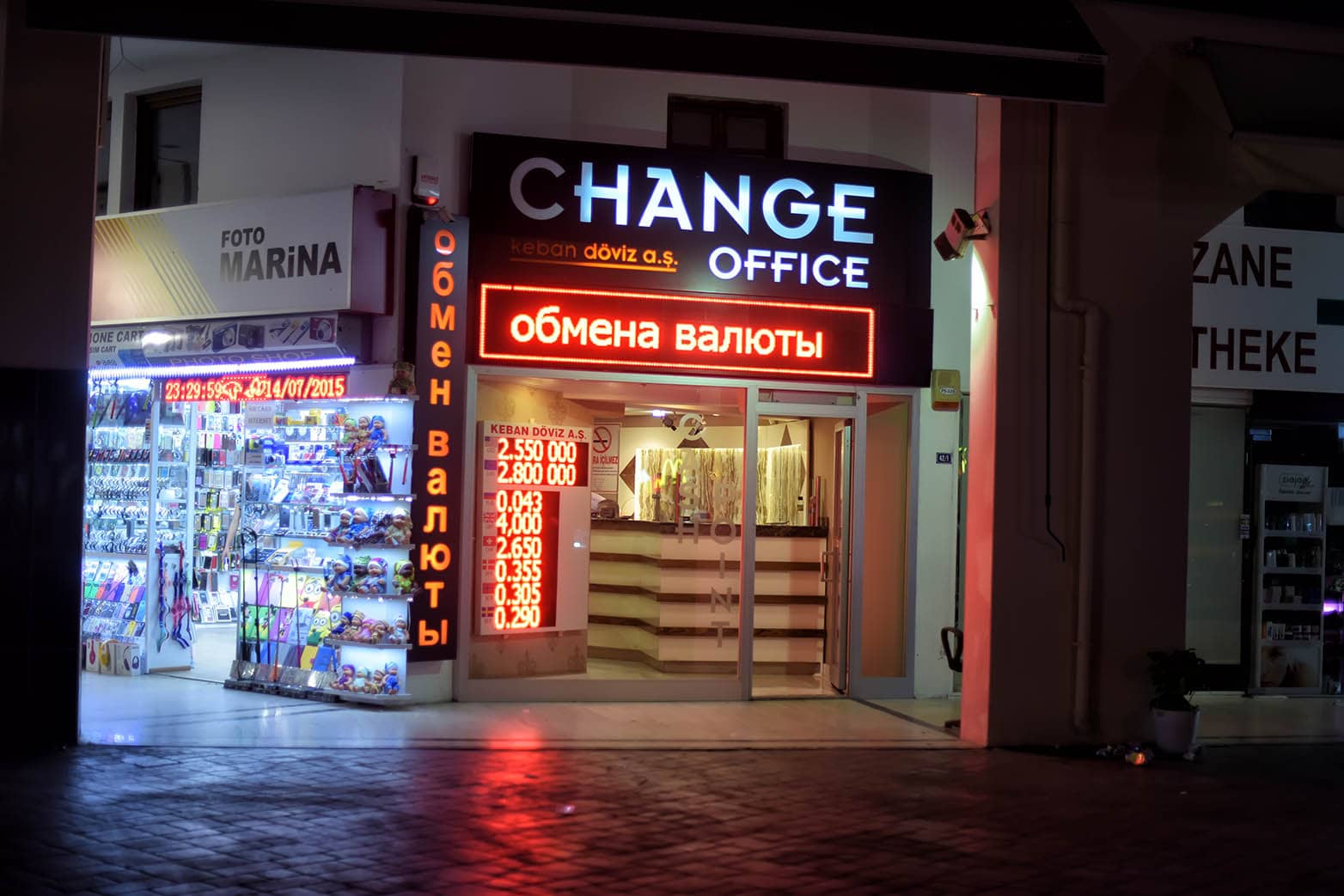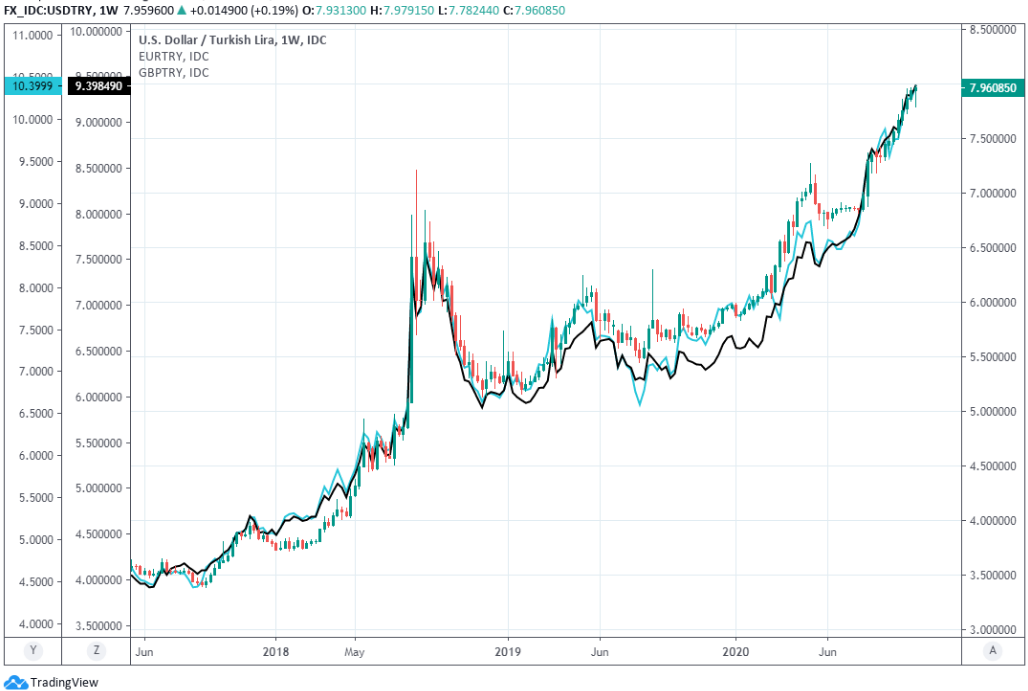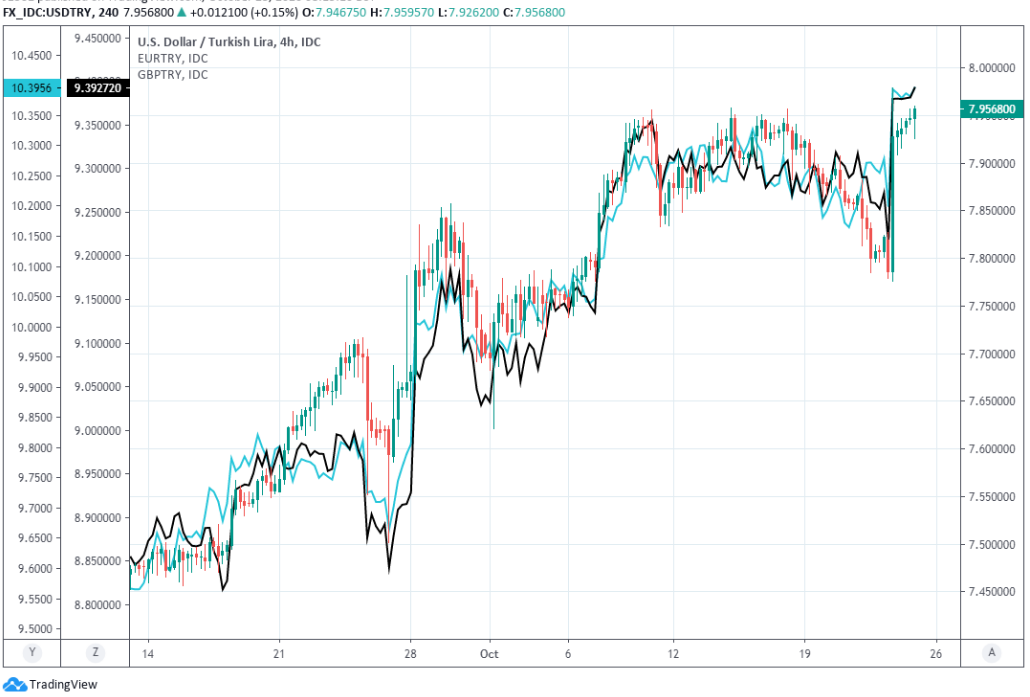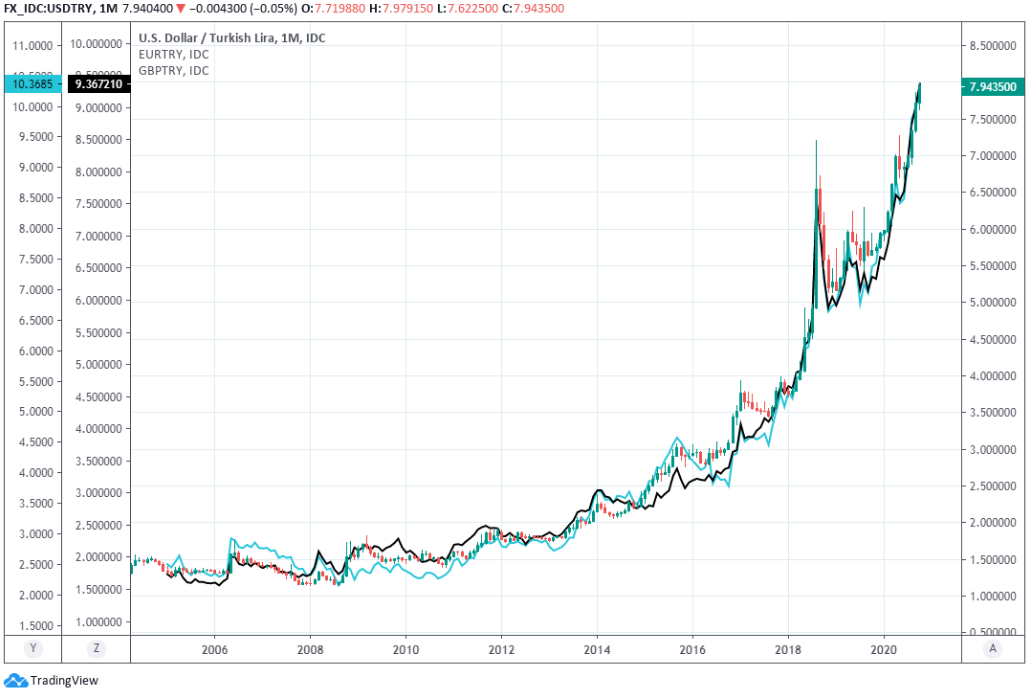Turkish Lira Languishes at Historic Lows On CBRT Frustrations as Charts Flag EUR/TRY Move to 10.0
- Written by: James Skinner

Image © Adobe Images
- GBP/TRY spot rate at time of writing: 10.37
- Bank transfer rate (indicative guide): 10.01-10.08
- FX specialist providers (indicative guide): 10.21-10.28
- More information on FX specialist rates here
The Lira languished at historic lows on Friday after the Central Bank of the Republic of Turkey (CBRT) disappointed investors by neglecting to lift interest rates following its October meeting, although even before then some analysts had warned that EUR/TRY is on course for the round number of 10.0.
Turkey's Lira left its earlier low against the Dollar intact on Thursday and Friday but had plumbed new depths against the Euro and Pound after the CBRT left its main interest rate at 10.25% in a decision that took some investors by surprise.
"This decision could cost TRY holders another round of pain until the “right” message is sent to stem further weakness (or the EM mood could shift to a more neutral or negative level, raising the bar for the TRY to slow its descent)," says John Hardy, head of FX strategy at Saxo Bank.
Above: USD/TRY shown at 4-hour intervals alongside EUR/TRY (black line, left axis) and GBP/TRY (blue line, left axis).
Turkish policymakers had lifted the main interest rate 200 basis points from 8.25% last month in what was another surprise decision, leading many forecasters to conclude that market presssure on the currency and resulting increases in inflation had persuaded the central bank to throw caution to the wind and begin a hiking cycle.
"The exchange rate had stabilised only in recent days, partly because of a weaker dollar, but much more because market expectations had strengthened that CBT would continue its rate hiking cycle in an independent manner, in line with its own inflation assessment," says Tatha Ghose, an analyst at Commerzbank.
On Thursday the CBRT followed its decision to hold rates with a statement suggesting that "any new data or information" may lead the monetary policy committee to change its stance, although this was almost in the same sentence that it acknowledged "inflation followed a higher-than-envisaged path."
"The Bank indicated that it will continue to take liquidity measures until the inflation outlook improves significantly. However, today’s step clearly doesn’t convince markets on the CBRT inflation commitment," says Mathias Van der Jeugt, head of research at KBC in Brussels.
Above: USD/TRY shown at weekly intervals alongside EUR/TRY (black line, left axis) and GBP/TRY (blue line, left axis).
CBRT policymakers acknowledged that "restoring the disinflation process is a key factor for achieving lower sovereign risk, lower long-term interest rates, and stronger economic recovery," but when taken with the decision to hold rates the comments did nothing to dissuade analysts of the notion the CBRT has been politically compromised.
"While our basecase had been for a hike too, we warned against the “automatic” assumption that CBT could continue hiking rates – the unanswered question was whether or not the political leadership were on board with this. Today we got the answer. Look for further upside in USD-TRY," says Commerzbank's Ghose.
Perceptions of fealty to Ankara had not been helped by the rhetoric of President Recep Erdogan himself, who’s argued that high interest rates lead to high inflation and that the only way to curtail price pressures is to cut rates. That’s precisely the opposite of how the rest of the world approaches interest rates.
Rising inflation typically begets higher rates, somewhat idled capital and slower economic growth in the current world where most central banks are “inflation targeting.” But inflation orthodoxy has been thrown to the wind in Turkey, with rising prices often prompting even lower interest rates - followed by punishing falls for the Lira.
Above: USD/TRY shown at monthly intervals alongside EUR/TRY (black line, left axis) and GBP/TRY (blue line, left axis).
Turkey’s cash rate has been cut from 24% in July 2019, which goes some way toward explaining the pressures that have lifted USD/TRY from 3.77 at the beginning of 2018 to nearly 8.0 this October, and EUR/TRY from 4.0 to 9.40.
"EUR/TRY is still gunning for the psychological 10.0000 mark. USD/TRY continues its ascent tow ards the psychological 8.0000 mark," says Axel Rudolph, a senior technical analyst and Commerzbank colleague of Ghose.
Authorities have been able to slow the Lira's depreciation using central bank foreign exchange reserves of the CBRT and by leveraging the balance sheets of domestic banks, although hthe reserves coffers are now believed to have run empty while commercial lenders have all but been squeezed dry.
Turkey is unable to produce the foreign currency supply needed to prop up the Lira since travel and tourism have been curbed due to the pandemic, Meanwhile, Turkey is engaged in multiple geopolitical disputes that risk seeing the already crumbling, coronavirus ravaged economy clobbered with sanctions.






